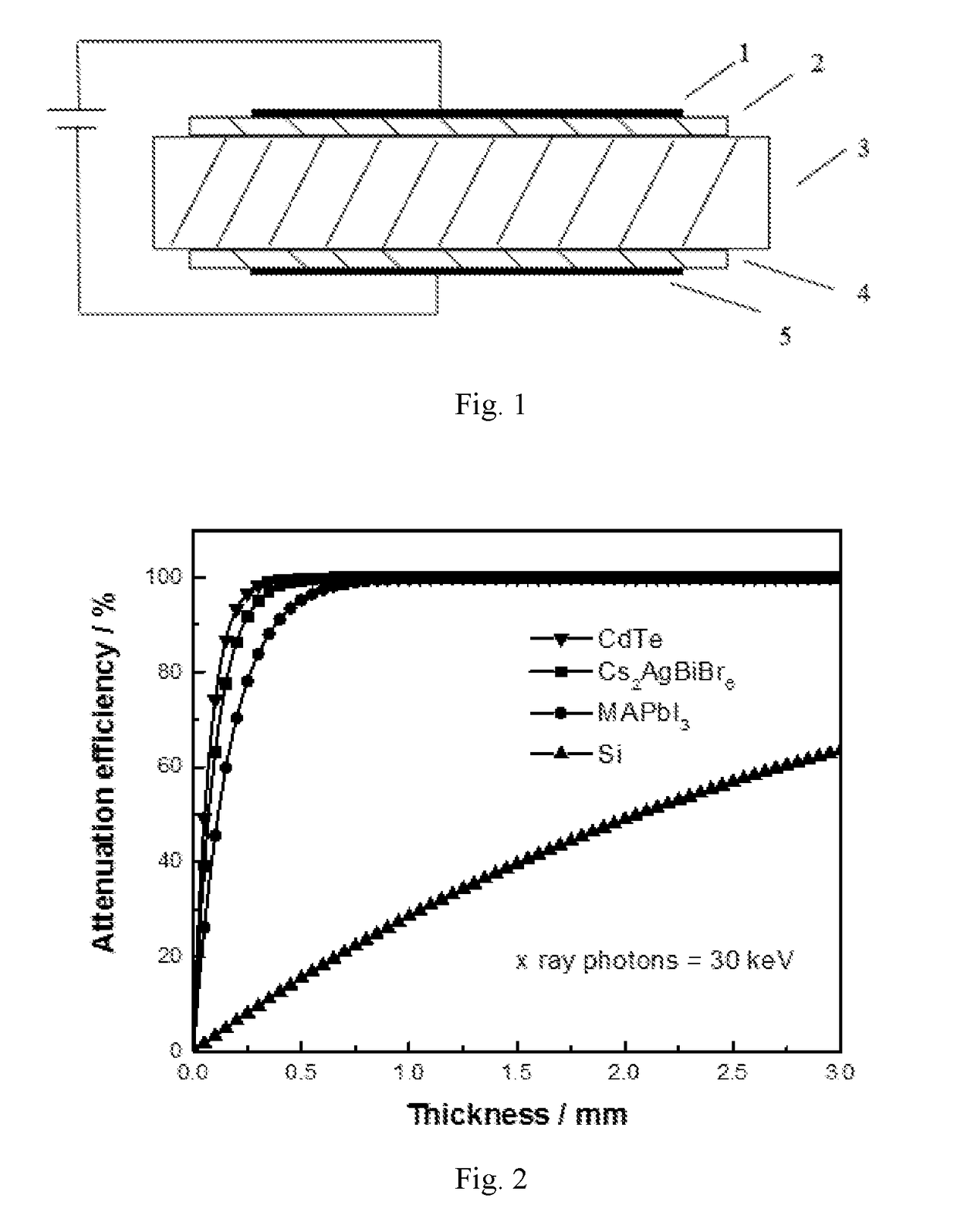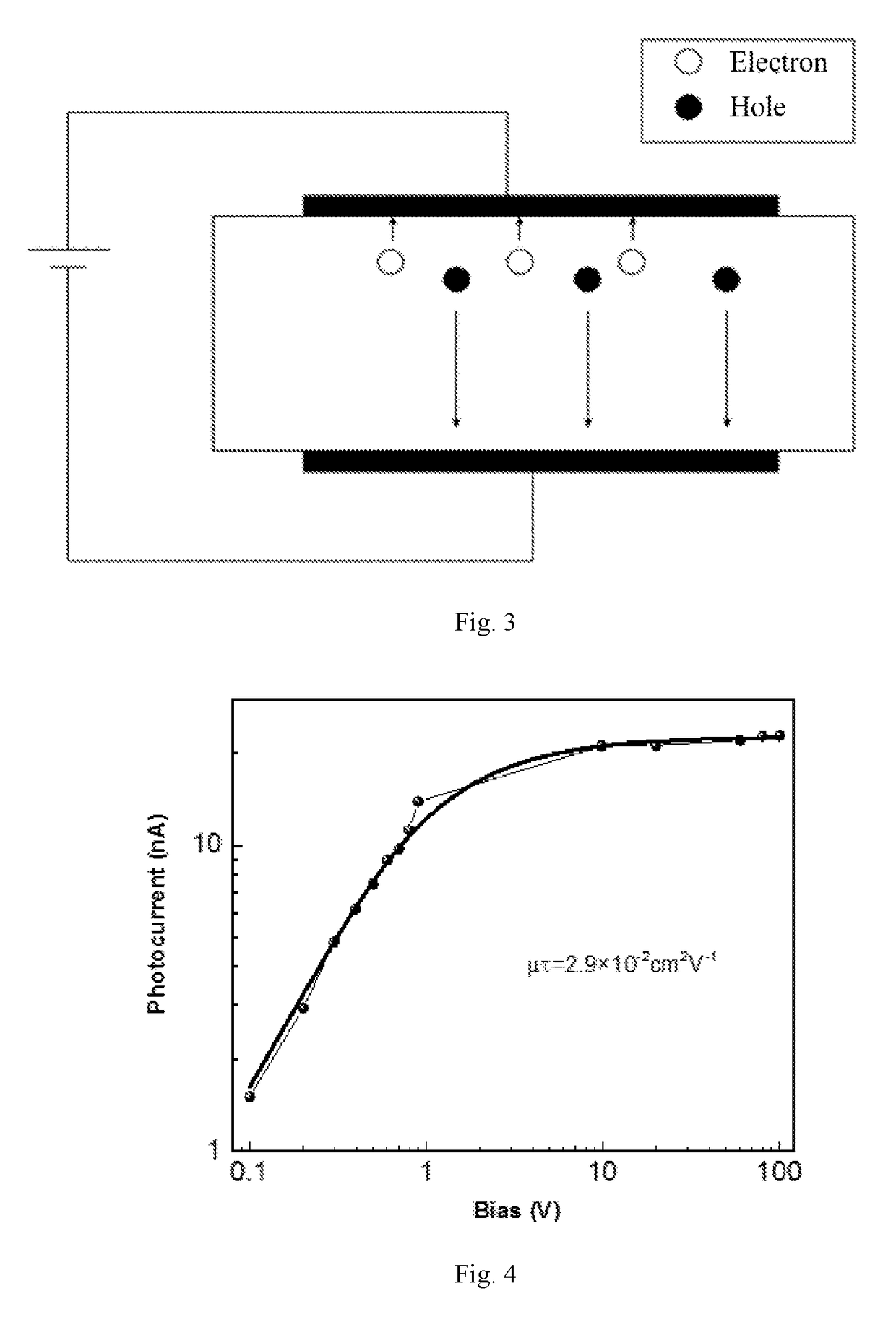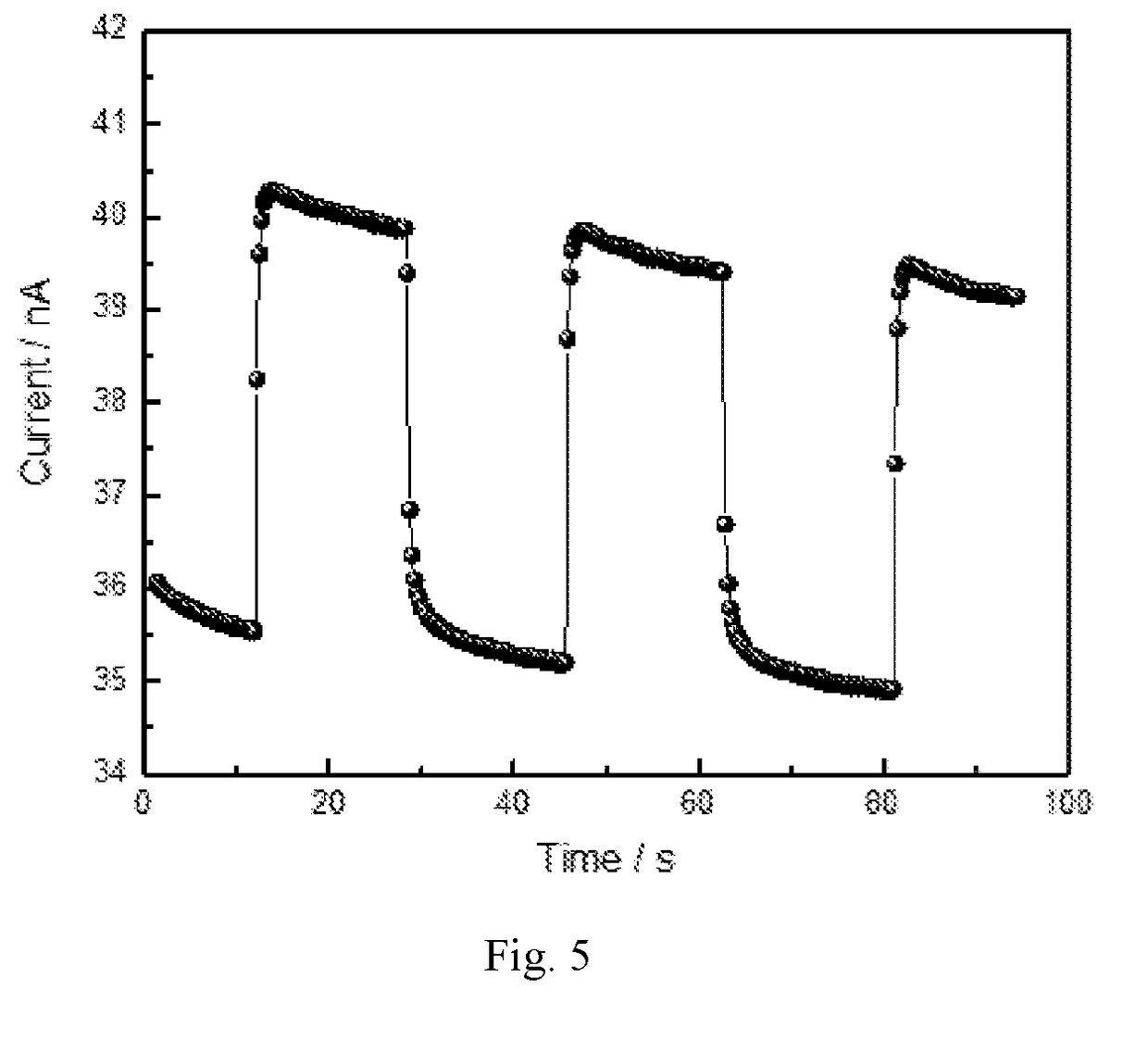Semiconductor radiation detector based on bi-based quaternary halide single crystal and manufacturing method thereof
a technology of quaternary halide and semiconductors, applied in the direction of semiconductor devices, basic electric elements, electrical equipment, etc., can solve the problems of low sensitivity, need to increase bias voltage, complex process, etc., and achieve high carrier lifetime, high mobility, and suitable band gap
- Summary
- Abstract
- Description
- Claims
- Application Information
AI Technical Summary
Benefits of technology
Problems solved by technology
Method used
Image
Examples
embodiment 1
[0033]In this embodiment, the preparation of cesium silver bismuth bromine (Cs2AgBiBr6) crystal and the manufacturing of a semiconductor radiation detector using this crystal will be described.
[0034]Silver bromide (AgBr, 0.188 g, 1 mmol), bismuth bromide (BiBr3, 0.449 g, 1 mmol) and cesium bromide (CsBr, 0.426 g, 2 mmol) are added into a 10 ml solution of hydrobromic acid (HBr), the solution is heated to 130 degrees Celsius to fully dissolve the solute, and then the solution is cooled to 60 degrees Celsius at a rate of 1 degrees Celsius per hour to precipitate the crystal, thereby obtaining the Cs2AgBiBr6 crystal.
[0035]Gold electrodes with a thickness of 80 nm are then formed on upper and lower surfaces of the crystal by thermal evaporation.
embodiment 2
[0036]In this embodiment, the preparation of cesium silver bismuth bromine (Cs2AgBiBr6) crystal and the manufacturing of a semiconductor radiation detector by adding charge selective contact layers on the crystal will be described.
[0037]Silver bromide (AgBr, 0.188 g, 1 mmol), bismuth bromide (BiBr3, 0.449 g, 1 mmol) and cesium bromide (CsBr, 0.426 g, 2 mmol) are added into a 10 ml solution of hydrobromic acid (HBr), the solution is heated to 130 degrees Celsius to fully dissolve the solute, and then the solution is cooled to 60 degrees Celsius at a rate of 1 degrees Celsius per hour to precipitate the crystal, thereby obtaining the Cs2AgBiBr6 crystal.
[0038]Buckminsterfullerene (C60) is formed on the upper surface of the crystal by thermal evaporation.
[0039]Gold electrodes with a thickness of 80 nm are then formed on the upper and lower surfaces of the crystal by thermal evaporation.
embodiment 3
[0040]In this embodiment, the preparation of cesium silver bismuth bromine (Cs2AgBiBr6) crystal and the manufacturing of a semiconductor radiation detector using this crystal will be described.
[0041]Silver bromide (AgCl, 0.144 g, 1 mmol), bismuth bromide (BiBr3, 0.317 g, 1 mmol) and cesium bromide (CsCl, 0.328 g, 2 mmol) are added into a 10 ml solution of hydrochloric acid (HCl), the solution is heated to 120 degrees Celsius to fully dissolve the solute, and then the solution is cooled to 60 degrees Celsius at a rate of 0.5 degrees Celsius per hour to precipitate the crystal, thereby obtaining the Cs2AgBiCl6 crystal.
[0042]Gold electrodes with a thickness of 80 nm are then formed on upper and lower surfaces of the crystal by thermal evaporation.
[0043]It can be seen from the embodiments that the semiconductor radiation detector manufactured by the present invention has advantages such as high sensitivity, good stability and environmental friendliness.
PUM
 Login to View More
Login to View More Abstract
Description
Claims
Application Information
 Login to View More
Login to View More - R&D
- Intellectual Property
- Life Sciences
- Materials
- Tech Scout
- Unparalleled Data Quality
- Higher Quality Content
- 60% Fewer Hallucinations
Browse by: Latest US Patents, China's latest patents, Technical Efficacy Thesaurus, Application Domain, Technology Topic, Popular Technical Reports.
© 2025 PatSnap. All rights reserved.Legal|Privacy policy|Modern Slavery Act Transparency Statement|Sitemap|About US| Contact US: help@patsnap.com



